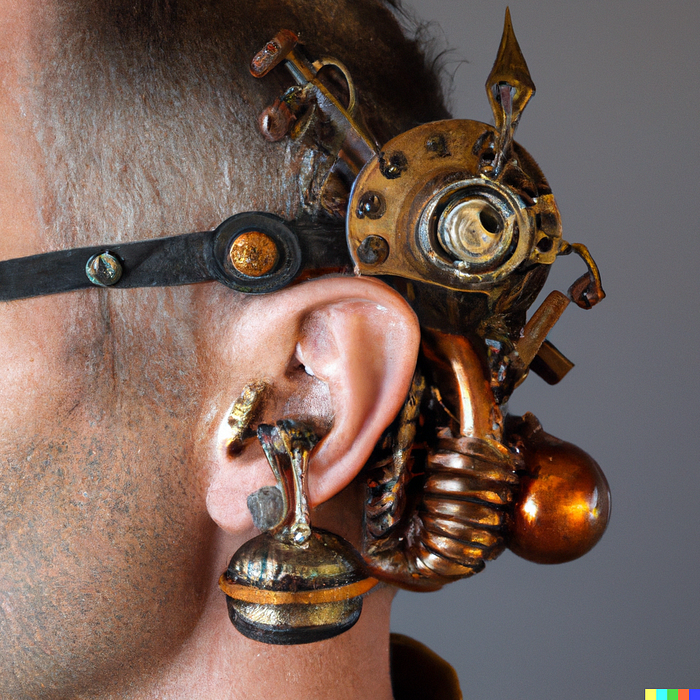

Most good designers have two ears and only one mouth
source link: https://uxdesign.cc/most-good-designers-have-two-ears-and-only-one-mouth-a770d11d164
Go to the source link to view the article. You can view the picture content, updated content and better typesetting reading experience. If the link is broken, please click the button below to view the snapshot at that time.

Most good designers have two ears and only one mouth
What if designers used non-violent communication tools to focus more on how to listen, empathise, and understand. Would that help when researching, designing, pitching, and presenting?

Listening is difficult, given that humans have an average eight-second attention span.
Listening before speaking
We were at a restaurant, booked only for us that night. There were four or five long tables, a dinner party organised by a business association I’m a member of. I was looking to the left, to the right and straight ahead. Everyone around me met my glance with pain and suffering in their eyes. We all looked down at our half-empty dinner plates. I shivered.
It wasn’t the food, the company or the setting that caused the pain, it was the speaker. Maybe you’ve been there at a meeting, a conference or possibly a wedding, and the speaker is not tuned in to the audience. The speaker does not know what the audience wants or needs to hear.
Maybe you recognise inappropriate jokes or get a topic explained to you as if you had no idea, even though you’re an expert. Or maybe no one has any idea what the speaker is on about. Other times it might be a very one-sided conversation where you don’t get a chance to open your mouth. You know it if you’ve been there. Speakers who are out of touch with their audience are easy to remember.
Presentations, speeches and even conversations are all better when the speaker has listened before opening their mouth. And much like presenting or public speaking, listening is something that can be practised and improved.
Aytekin Tank has a great article on the skills of listening. In it, he describes the value of being a good listener. He shares why when they hire people, they actively look for good listeners.
If you want to actively become a better listener, check out this article from Designlab. It states that if you become a better listener, it’s likely that you’ll improve both professional and personal relationships.
Designers are also listeners
Listening is generally a good way to understand one’s surroundings, so as designers, should we listen more? I believe we should. Not just to our customers or users, but to everyone. Because so much focus is targeting our output (the shiny product), focus on the input (why did we make it shiny?) can easily get lost.
As UX designers, we are already listeners when it comes to our users. Testing and researching involves listening and observing the people who are on the other end of our products and services. We already know how important it is to have research backing up why we’re making something, and testing to ensure we know how to make it in the best way.
But, there’s more we can listen to. We do not only make products and services for our users, even though that is what we tend to focus on. We make products and services for users, provided by organisations, that exist in a context. We are dealing with a (at least) three headed dog here, and we have to listen to all three heads, speaking at the same time.

A three headed dog, talking to us about three different things.
If we as designers can utilise our listening skills to understand the organisations and businesses we work for, as well as the context in which we exist as a product or service, we can make sure that our work is valuable, effective and solves the right problems.
Design research, use ears and eyes
Design research is the way designers listen. We put our ego aside and set out to learn more about unknown problems, known problems and test our solutions with real people.
Let’s use these tools to also engage our businesses and organisations. Take the listening skills from design research, and use the methods when talking to, and listening to, other stakeholders. Ask open questions (avoid leading questions) and ask clear questions (avoid double-barreled questions). Ask follow up questions to dig deeper into your topic. Let the other person finish, but don’t be completely silent. Encourage them to continue, or just wait to see if there’s more.
As designers we can influence not only our users, but the entire chain of the development of a product or service. We’re in the room when developers talk about APIs, we’re in the rooms of POs or PMs talking about priorities, and we might even be in the room when Head of XYZ is working on a 5 year plan for taking on a new market. We are fluent in that way, and by using our listening skills we can improve our view of the world we’re in. And a better view of our world is going to add value to us as designers.
Knowing when to be quiet
I’m from a culture of slow speakers and lots of silence. I usually don’t feel awkward if there’s a long pause or a silent moment, but I know that a lot of people do. According to a study at the University of Groningen, it takes only 4 seconds for people in the US to feel uncomfortable. Here’s a great video from Kate Kaplan about using silence in design research.
When talking to people, whether it is in a research setting, a conversation or even during a talk, waiting to see if there’s a reaction from the listener is really valuable. When you’re the listener, by giving the speaker a bit of time you might give them time to express a second or third point of view. It is in these moments of silence that we get time to reflect, and when we have the ability to reflect, more and deeper insights can come to us.
Non violent communication in a design context
So we’ve looked at listening, asking questions, and being quiet. Let’s put it all together and use a design lens on the non-violent method for communication.
Marshall Rosenberg, psychologist, mediator, author, and teacher developed non-violent communication to resolve conflict and support partnerships.
We first have to recognise that violence in this context is verbal, so we’re not talking about separating two fighting UX designers here. Brad Dunn has a great example in his article, of a designer getting violent feedback.
“You’re not good enough when it comes to visual design. It’s just not up to standard.” might have been delivered to a designer as feedback. It is violent in the way that it is vague enough for this designer to think that it’s them as a person that isn’t good enough. The feedback contains no definition of what would be good enough, or how to get there.
Non-violent communication can be looked at in four steps; observing, feeling, needing and requesting. By taking these four into account before we speak, we can try our best to create great conditions for others to feel safe around us.
Instead of the feedback above, we could try a non-violent way. We observe that something isn’t up to standard when it comes to visual design. Maybe the gradient is missing an important brand colour. We notice how it makes us feel. We might feel insecure, since it’s such an important part of the brand. We clarify what our needs are. We really need to get this gradient right, so that everyone can recognise our brand. The last step is when we define a request. We need a new design for that gradient, that reflects our brand. This could all be delivered in a nice non-violent way.
“I’ve noticed that the gradient is missing our main blue colour, and it makes me feel a bit insecure. We need our brand to be visible at the conference, can you redesign it according to the colours we’ve agreed on?”
Practise makes perfect. No practise makes better
We can’t change others. There will be moments when we get poorly framed feedback, when we get interrupted or ignored. We will interact with people who prefer their own voice over anything. We can’t change that. At least not instantly.
What we can do is to practice. We can get better when we listen, speak and give feedback. We can do our best to be inclusive, respectful and transparent when we speak. If we observe the world around us, grow aware of how we feel and what our needs are, and then frame the requests we have accordingly, we contribute to the culture around us. We will slowly but surely change the norms for communication around us. We can’t change others, but we can change our own behaviour. And when we change our behaviour we influence others around us.
And we’re not going to be great at it from the start. But listening and speaking are something we practice, and the best thing about practicing is improving. We get better. We teach by doing.
Key takeaways
Aiming to use a non-violent way of communicating is a way for you as a designer to better understand the world in which your designs exist, and understand others and yourself. The way you speak is going to influence your listeners. You can make a difference.
</div
Recommend
About Joyk
Aggregate valuable and interesting links.
Joyk means Joy of geeK